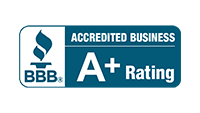
Key Performance Indicators (KPIs) are essential to any advertising campaign. They help advertisers measure their campaigns’ success, identify improvement areas, and make data-driven decisions. In this blog post, we will discuss the best KPIs for advertising and why they are important.
Seven KPIs for Advertising
- Return on Investment
- Cost per Aquisition
- Click-Through Rate
- Conversion Rate
- Cost-per-Click
- Cost per Thousand Impressions
- Lifetime Value
Return on Investment (ROI)
Return on Investment (ROI) is one of the most important KPIs for advertising. It measures the revenue an advertising campaign generates compared to the amount spent. ROI helps advertisers determine whether their campaign is profitable or not. To calculate ROI, advertisers need to subtract the cost of their advertising campaign from the revenue generated and then divide the result by the campaign cost. For example, if an advertising campaign costs $1,000 and generates $2,500 in income, the ROI would be 150%.
ROI is important because it helps advertisers determine whether to continue investing in a particular campaign. If the ROI is positive, the campaign is profitable, and the advertiser should continue investing. If the ROI is negative, the campaign is not generating enough revenue, and the advertiser should either stop the campaign or make changes to it to improve its performance.
Cost per Acquisition (CPA)
Cost per Acquisition (CPA) is another important KPI for advertising. It measures the cost of acquiring a new customer through advertising. Calculate CPA by dividing the cost of the advertising campaign by the number of new customers acquired through the campaign.
For example, if an advertising campaign costs $1,000 and generates 100 new customers, the CPA would be $10. CPA is important because it helps advertisers determine the cost-effectiveness of their advertising campaigns.
Advertisers should keep their CPA as low as possible. A high CPA means the cost of acquiring new customers is too high, making the advertising campaign unprofitable. To reduce CPA, advertisers can optimize their targeting, ad creative, and landing pages to improve the conversion rate of their campaigns.
Click-Through Rate (CTR)
Click-Through Rate (CTR) is a KPI that measures the number of clicks an advertising campaign receives compared to the number of impressions (views) it receives. CTR is calculated by dividing the number of clicks by the number of impressions and multiplying the result by 100 to get a percentage.
For example, if an advertising campaign received 10,000 impressions and 100 clicks, the CTR would be 1%. CTR is important because it helps advertisers determine the effectiveness of their ad creative and targeting.
A high CTR means the ad creative is engaging and relevant to the target audience. A low CTR means the ad creative is not resonating with the target audience, and advertisers should consider changing it. Advertisers can optimize their ad creative, targeting, and placement to improve CTR to reach the right audience with the right message.
Conversion Rate
Conversion rate is a KPI that measures the percentage of people who take a desired action after clicking on an ad. This action could be purchasing, filling out a form, or downloading an app. The conversion rate is calculated by dividing the number of conversions by the number of clicks and multiplying the result by 100 to get a percentage.
For example, if an advertising campaign received 100 clicks and 10 conversions, the Conversion rate would be 10%. Conversion rate is important because it helps advertisers determine the effectiveness of their landing pages and calls to action.
A high conversion rate means the landing page is relevant and compelling, and the call to action is clear and persuasive. A low conversion rate means the landing page is not resonating with the audience, or the call to action needs to be clarified. To improve the conversion rate, advertisers can optimize their landing page, refine their call to action, and improve their targeting to ensure they reach the right audience with the right message. You can find a conversion rate calculator here.
Cost per Click (CPC)
Cost per click (CPC) is a KPI that measures the cost of each click on an ad. Calculate CPC by dividing the cost of the advertising campaign by the number of clicks received.
For example, if an advertising campaign cost $1,000 and received 100 clicks, the CPC would be $10. CPC is important because it helps advertisers determine the cost-effectiveness of their advertising campaigns.
Advertisers should keep their CPC as low as possible. A high CPC means that the cost of each click is too high, which can make the advertising campaign unprofitable. To reduce CPC, advertisers can optimize their targeting, ad creative, and landing pages to improve the relevance and quality of their ads.
Cost per Thousand Impressions (CPM)
Cost per thousand impressions (CPM) is a KPI that measures the cost of each thousand impressions (views) of an ad. CPM is calculated by dividing the cost of the advertising campaign by the number of impressions received and then multiplying the result by 1,000.
For example, if an advertising campaign cost $1,000 and received 10,000 impressions, the CPM would be $100. CPM is important because it helps advertisers determine the cost-effectiveness of their advertising campaigns.
Advertisers should keep their CPM as low as possible. A high CPM means that the cost of each impression is too high, which can make the advertising campaign unprofitable. Advertisers can optimize their targeting, ad creative, and ad placement to reach the right audience with the right message to reduce CPM.
Lifetime Value (LTV)
Lifetime value (LTV) is a KPI that measures the total revenue generated by a customer throughout their relationship with a business. LTV is important because it helps advertisers determine th long-term value of their customers and the profitability of their advertising campaigns.
To calculate LTV, advertisers need to multiply the average purchase value by the average number of purchases per year and then multiply the result by the average customer lifespan. For example, if the average purchase value is $50, the average number of purchases per year is 2, and the average customer lifespan is five years, the LTV would be $500.
Businesses can increase LTV by providing excellent customer service, offering personalized experiences, and building brand loyalty. A higher LTV means customers are more valuable to the company over the long term, making advertising campaigns more profitable.
Conclusion
In conclusion, the best KPIs for advertising are those that help advertisers measure their campaigns’ success, identify improvement areas, and make data-driven decisions. ROI, CPA, CTR, Conversion Rate, CPC, CPM, and LTV are some of the most important KPIs for advertising. By focusing on these KPIs and continuously optimizing their advertising campaigns, advertisers can achieve their desired outcomes and maximize the return on their investment.





